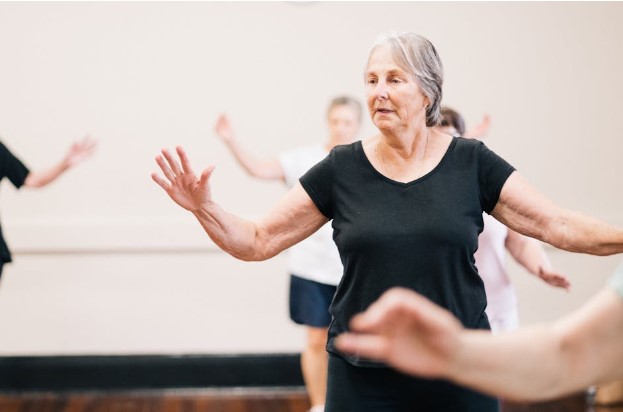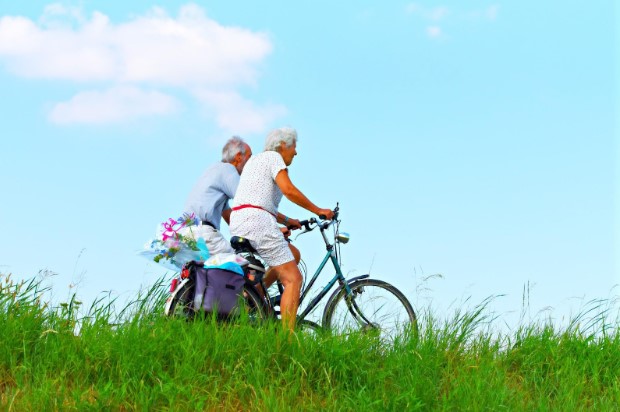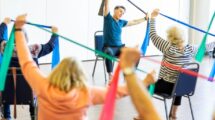Aging is natural, but vitality and strength can be maintained with regular exercise. It plays a key role in health as you age, offering physical and mental benefits to manage aging challenges. From flexibility to cardiovascular health, staying active enhances quality of life and longevity. This post explores the importance of exercise for aging individuals and the types that support healthy aging.

Strengthening Muscles and Bones
Loss of muscle mass, known as sarcopenia, becomes more common as we age, leading to weakness and reduced physical ability. Strength training exercises like light weightlifting, resistance bands, or bodyweight workouts are effective for maintaining muscle mass and strength. Whether you choose gym membership at the YMCA or work out at home, incorporating these exercises into your routine can help slow muscle loss. Strong muscles also play a significant role in supporting bone health, and weight-bearing activities such as walking or jogging help improve bone density, reducing the risk of osteoporosis and fractures.
Maintaining Mobility and Flexibility
As we age, our bodies naturally lose some flexibility and mobility. Stiff joints and tight muscles can make everyday movements more difficult, potentially leading to a higher risk of injury or falls. Incorporating exercises that promote flexibility into your routine can help preserve your range of motion, making it easier to move and perform daily tasks like reaching, bending, or walking. Activities such as yoga, Pilates, and even simple stretching can keep muscles and tendons flexible and promote joint health. Maintaining flexibility also helps reduce stiffness and discomfort, ensuring you can stay active without pain holding you back.
Supporting Cardiovascular Health
Cardiovascular diseases, including heart attacks and strokes, become more prevalent in older adults. Regular aerobic exercise helps to mitigate these risks by improving heart function, lowering blood pressure, and reducing cholesterol levels. Simple activities like brisk walking, cycling, or swimming can promote good heart health. It’s recommended to engage in at least 30 minutes of moderate-intensity aerobic exercise most days of the week to keep your cardiovascular system functioning well.

Enhancing Mental Health and Cognitive Function
Exercise has been shown to have a positive effect on mental health, making it especially important for older adults who may face issues like depression, anxiety, or cognitive decline. Physical activity triggers the release of endorphins, which help elevate mood and reduce stress. Staying active can also improve sleep quality, which tends to decline with age. Moreover, regular exercise has been linked to better brain health. Studies suggest that those who engage in regular physical activity are less likely to experience cognitive decline, including memory loss and slower processing speeds. Exercise can stimulate brain function, delay the onset of dementia, and potentially lower the risk of Alzheimer’s disease. Activities such as walking, dancing, or playing sports can sharpen cognitive skills and improve overall mental clarity.
Social Benefits of Group Exercises
Exercising in a group setting provides not only physical benefits but also social ones. Many older adults find it helpful to stay connected with others through group exercise classes or outdoor activities like walking groups. Staying socially engaged becomes more important as people retire or face reduced opportunities for regular social interaction. Group activities offer the chance to meet others, share experiences, and stay motivated. Group exercises such as water aerobics, tai chi, or walking clubs are great ways to blend physical activity with social interaction. The added benefit of doing these activities together can make exercising more enjoyable and help sustain long-term participation, improving both physical health and social well-being.
Improving Balance and Reducing Fall Risk
Poor balance can lead to an increased risk of falls, which are one of the leading causes of injury among older adults. Regular exercise, particularly activities that focus on core strength and stability, can improve balance and coordination. Exercises like tai chi, yoga, or even specific balance-focused movements such as standing on one leg or using balance boards are highly beneficial. Whether you incorporate these exercises at home or as part of a gym program, they strengthen the muscles in the legs and core, which are essential for maintaining stability.
Regular exercise plays a significant role in improving balance, reducing fall risk, and enhancing overall well-being for older adults. By engaging in activities that target core strength and stability, individuals can significantly reduce their chances of falls and injuries. Whether one chooses to practice tai chi, yoga, or simple balance exercises at home or in a group setting, the benefits extend beyond physical health to include social interaction and mental well-being. Investing in physical activity today is an investment in a healthier and more fulfilling future.






